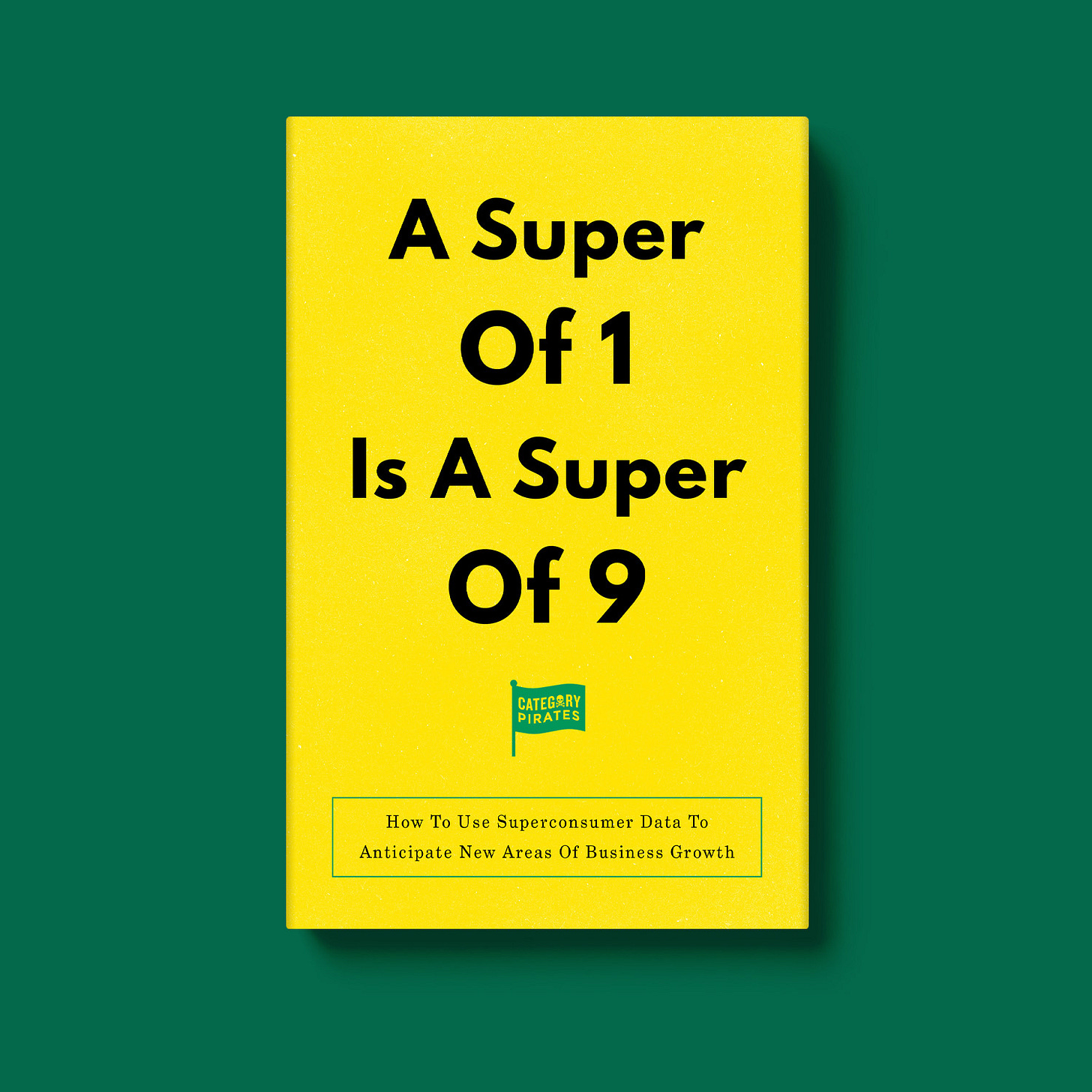How To Leverage Superconsumers For Growth & Category Creation: What Every Business Can Learn From Southwest Airlines
A Superconsumer of 1 category is a Superconsumer of 9 others.
Arrrrr! 🏴☠️ Welcome to a 🔒 subscriber-only edition 🔒 of Category Pirates. Each week, we share radically different ideas to help you design new and different categories. For more: View the mini-book archive | Listen to another category design jam session | Dive into an audiobook | Enroll in the free Category Accelerator email course
Dear Friend, Subscriber, and Category Pirate,
Do you know what a Superconsumer is?
A “Super” is the scrapbooking fanatic who owns not one, but a dozen different pairs of scissors—each one designed to cut different shapes from paper.
A “Super” is the online course enthusiast who buys not one, but a degree’s worth of online courses—each one providing slightly different information than the last.
A “Super” is the photographer who shoots with not one, but a backpack full of cameras, lenses, and filters—each one playing a crucial role in creating the perfect photo.
A “Super” is the first to download a new category of app, email the founders with their feedback, and simultaneously invite their closest friends to try the beta version.
A “Super” is the kind of person who knows your category better than anyone else—oftentimes, even better than you do.
We all have friends who are Supers. We can spot them from a mile away.
They’re the winos who arrive for a casual night of drinks with seven different types of wine glasses. They’re the rave attendees who show up wearing lime green booty shorts, multicolored rainbow faux rhinestone fringe epaulets, and a homemade iridescent sequin top (an outfit the average consumer wouldn’t know the first thing about assembling themselves). They’re the self-help readers who own every book in the genre, the sound engineers who collect studio amps and vintage microphones, the project managers who pay for software tools out of their own paychecks just because they want to try the newest organization platforms the moment they’re released, and the music fans who like to brag about how they were listening to rock band Greta Van Fleet before they won a Grammy.
In short, they’re the consumers pushing the category forward (whether they realize it or not). They are receptive to the new. They are looking for “different.”
They’re the first to spot breakthrough products and business model innovations, are quick to point out their frustrations with current category offerings, and with the rise of social media, are vocal about the future they believe is possible for the category they know and love so much. In fact, Supers leave so many digital breadcrumbs, that if you see anyone commenting extensively about a category on social media, an online review, or Reddit forum, they are 99% likely to be a Superconsumer.
And yet, when it comes to building companies, launching products, and creating new categories, Supers are almost always a forgotten piece of the puzzle.
They’re dismissed as being a small, weird bunch.
But in the discipline of category design, weird is good.
The Power of Superconsumers
In 2016, Pirate Eddie published a legendary book with Harvard Business Review Press called Superconsumers: A Simple, Speedy, and Sustainable Path to Superior Growth (coincidentally, the same year Pirate Christopher published Play Bigger). The insights in the book were generated from a data set of over 125 consumer-goods categories representing more than $400 billion in sales, with consumer purchasing behavior analyzed across multiple demographics.
The biggest benefit of Superconsumers comes down to simple math. Pound for pound, Supers generate the most power in a category—analogous to the power of Bruce Lee’s ‘one-inch punch.’
Although Supers are few in number—usually about 10% of consumers for a particular product or category (not 10% of your customers)—they can drive between 30% and 70% of sales, an even greater share of category profit, and 100% of the insights. What is often missed or misunderstood, however, is that Supers drive >100% of the ‘share of growth,’ which Pirate Eddie also wrote about in the Harvard Business Review. Note that the Superconsumer phenomenon is even more extreme in digital categories, where 6% of New York Times subscribers drive 67% of their revenue and 0.15% of casual gamers drive 50% of in-app purchases.



